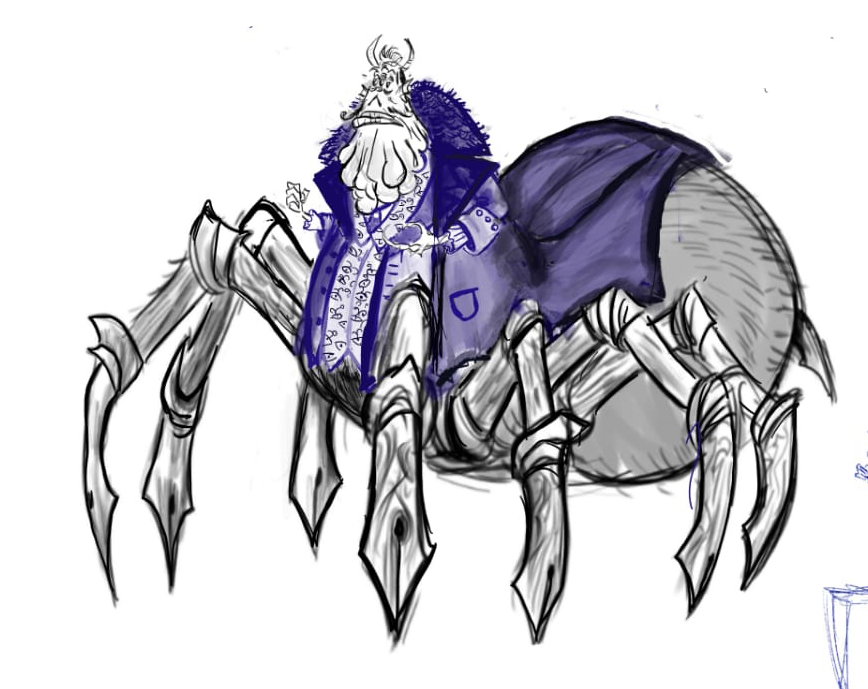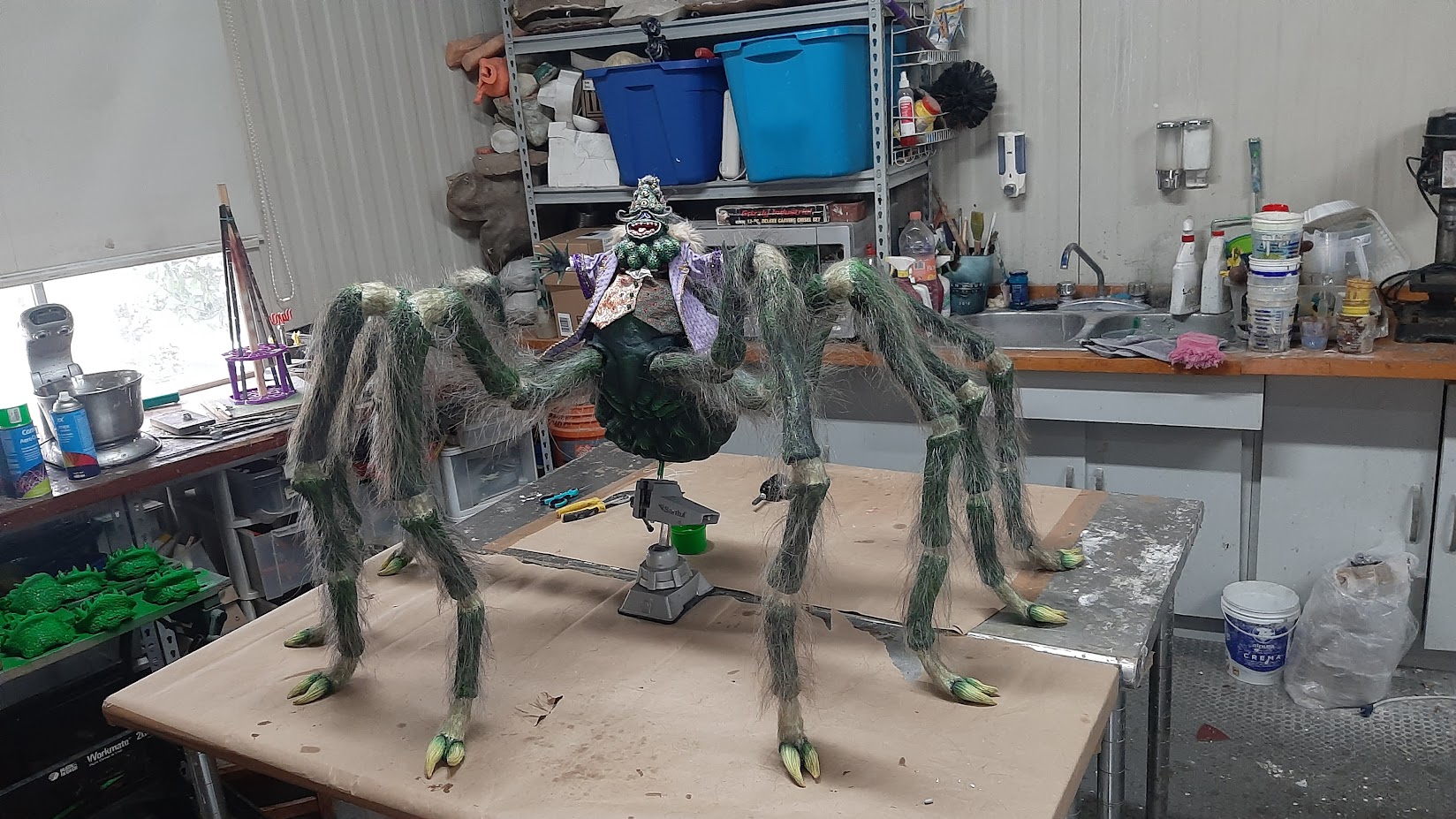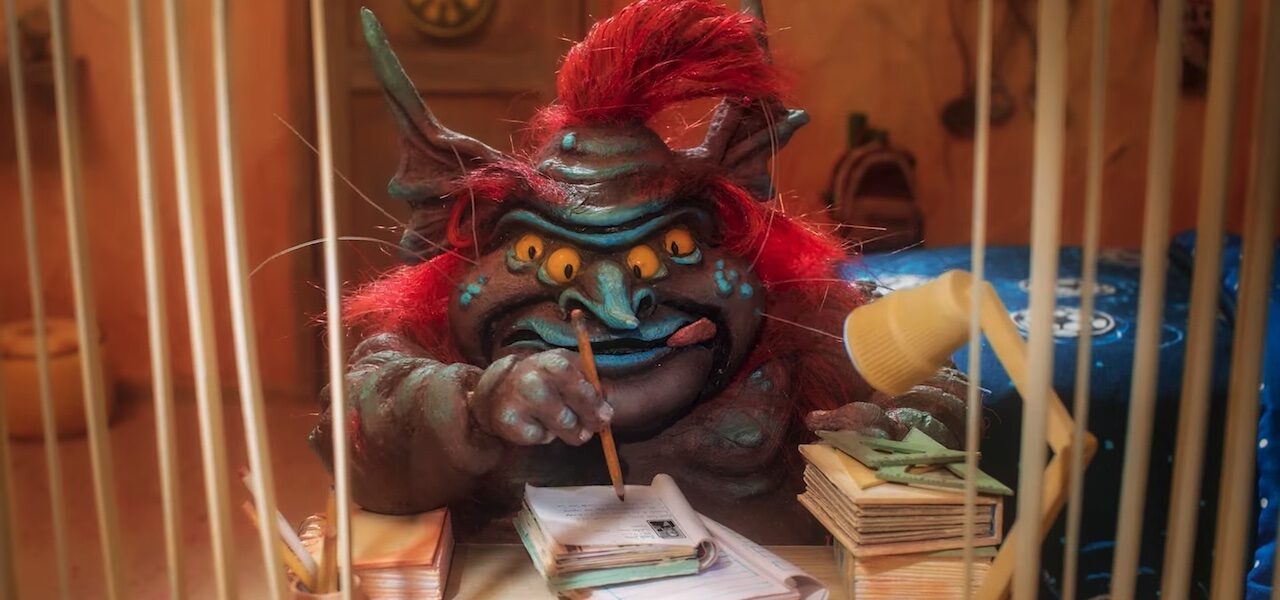
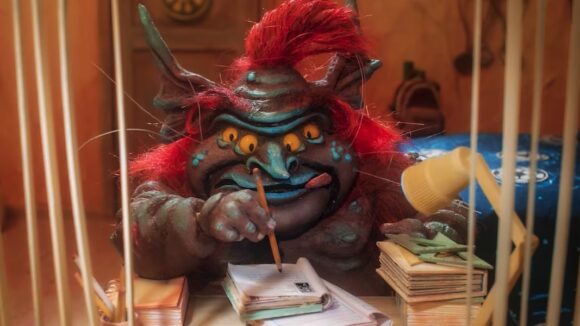
Creating A Menagerie Of Monster Puppets For ‘Frankelda’s Book Of Spooks’
Streaming platforms may be going all out to grow their share of the U.S. market, but some of their best shows aren’t even available in the country. Exhibit A: Frankelda’s Book of Spooks, a very charming kids’ stop-motion series, which is now streaming on HBO Max — in Latin America.
The anthology series was directed and produced by brothers Roy and Arturo Ambriz at their Mexico City studio Cinema Fantasma (in collaboration with Darkframe Digital). Regular readers may remember their names from last year, when we premiered their striking short film Revoltoso.
There are five 13-minute episodes, which collectively amount to the longest stop-motion production in Mexican history, according to the directors. In each episode, children are spooked by a different set of monsters drawn from Mexican folklore: mermaids, gnomes, boogeymen, and the like. The stories are narrated by “ghost host” Frankelda; the tone is more comic than frightening.
The Ambriz brothers devised the idea for each monster themselves, then worked with a team of artists to develop the designs. This team was led by twins Diego and Sebastián Ramírez, also known as The Awesombrosos (We the People, Victor and Valentino). Roy Ambriz then finalized the designs by sculpting the characters. Around eight people worked on the puppets themselves.
Cartoon Network Latin America released a pilot episode on Youtube in November 2019 — watch it above. But for now, there’s no word on whether Frankelda’s Book of Spooks will make it to other territories. In the hope that it will, we spoke to the Ambriz and Ramírez brothers about the design process behind the menagerie of monsters …
Ambriz brothers: We first work with the concept of each monster. In this phase, we try to get as concrete as possible as to what we want to see on screen. Since we’re writing the screenplays, we are imagining what kind of creatures we would like to see.
We are constantly trying to come up with characters that have never been seen on film or tv. For example, we wanted to have a scary mermaid, but immediately decided to make her an axolotl mermaid to stay as far as we could from the most common depictions.
Usually, we come up with sketches and simple clay sculptures to help us write these characters better. Design and story are intertwined processes at Cinema Fantasma. These visual cues serve as the axis that will help the other departments.
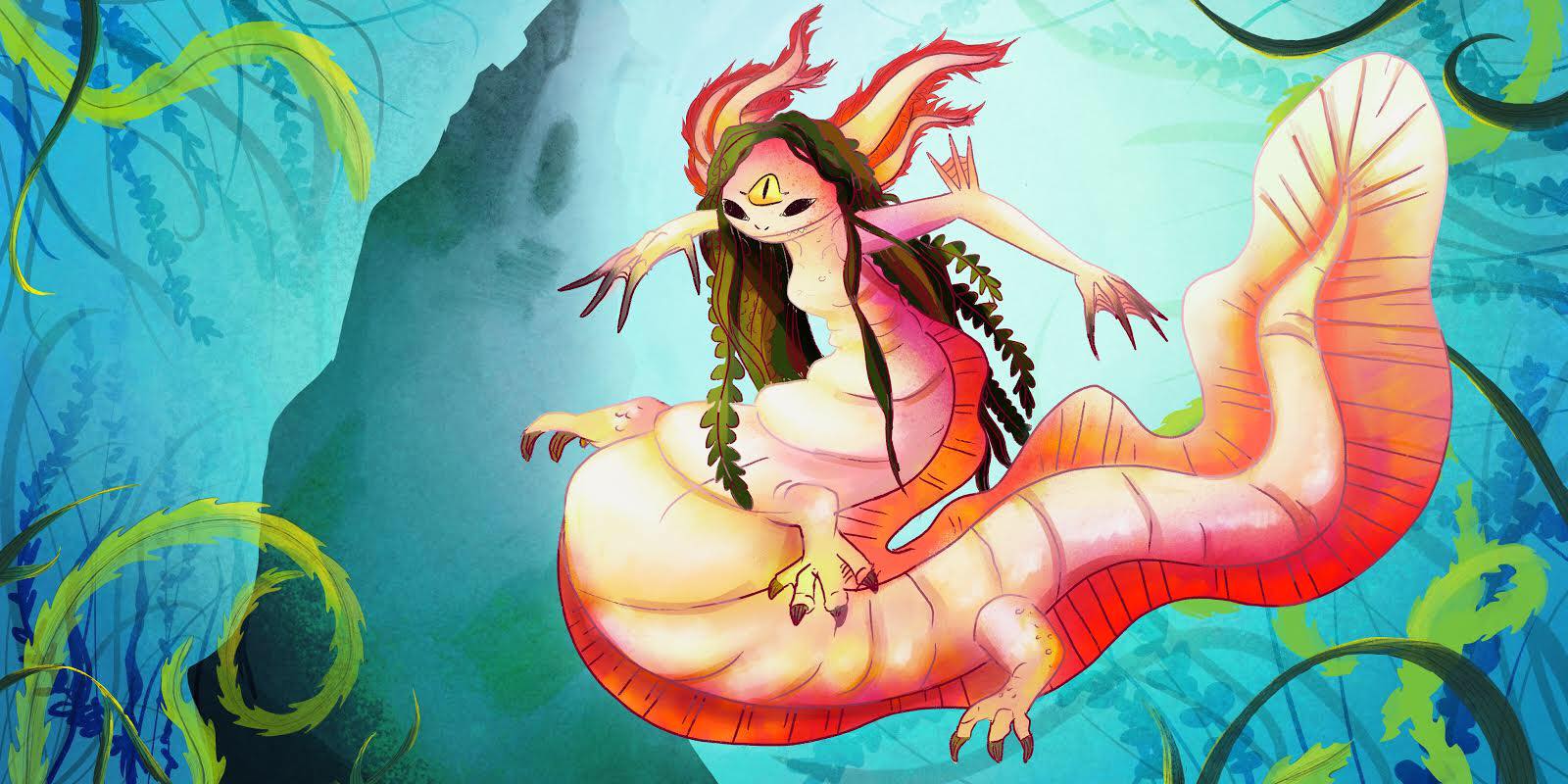

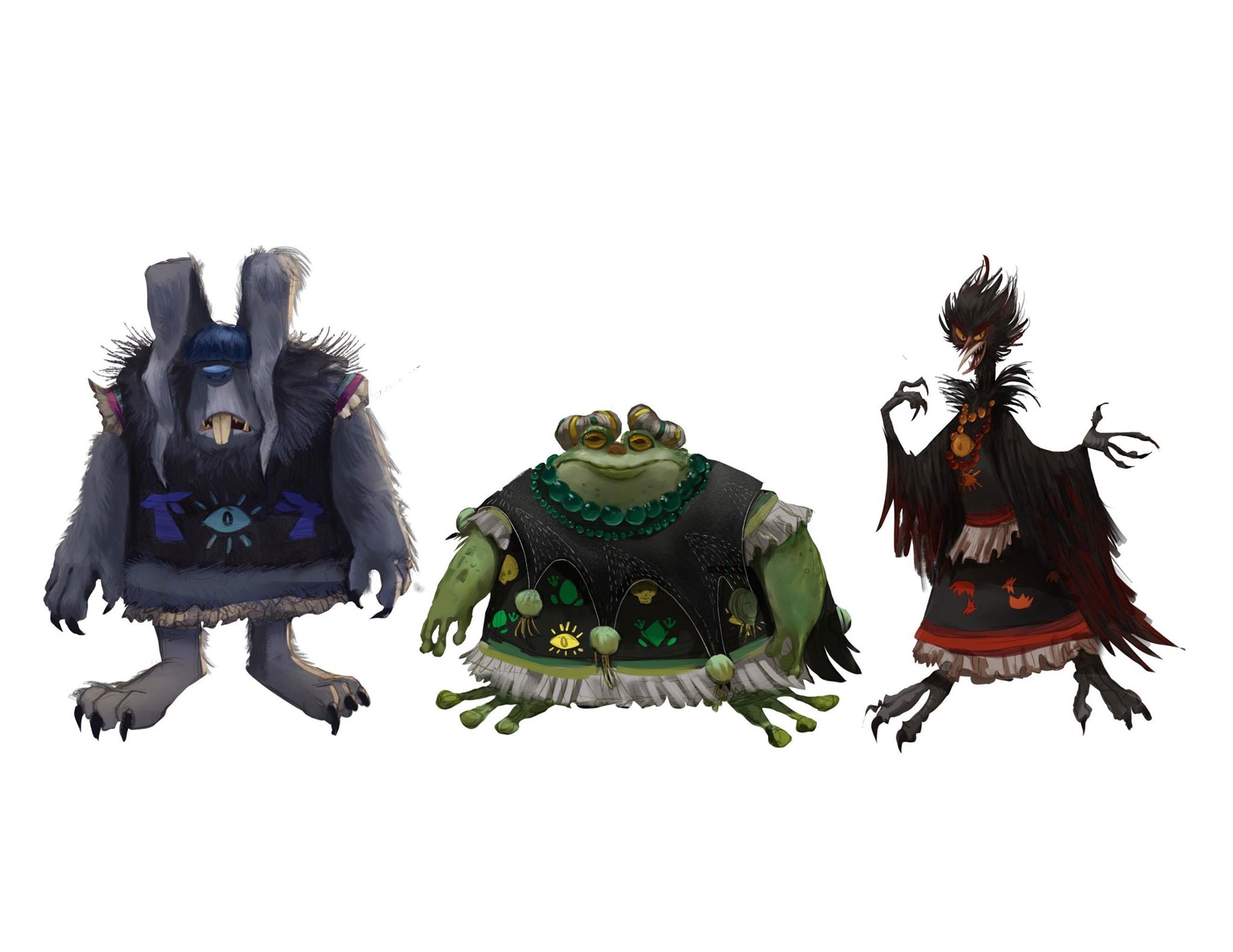
Ambriz brothers: We have a clear idea of what each character should represent. We like to work with symbols. When we have this visual base, we trust the talented team of artists that we work with to explore the characters and to try to make them as charismatic as possible.
We have found that this process works a thousand times better when we’re physically in the same space. Then it becomes like a creative party in which a collaboration can begin. Fortunately, we were able to work this way with character design in Frankelda just before the pandemic started.
Ramírez brothers: When designing characters, the first instruction we get is always to go as wild and free as we can, so that we can find the best outcome possible. Then, as designers, we have to make sure those wild designs really work, and can not only be translated to 3d sculptures but be readable. We must ensure they can emote and act, and that their silhouettes will be readable no matter whether they appear in long shots or closeups.
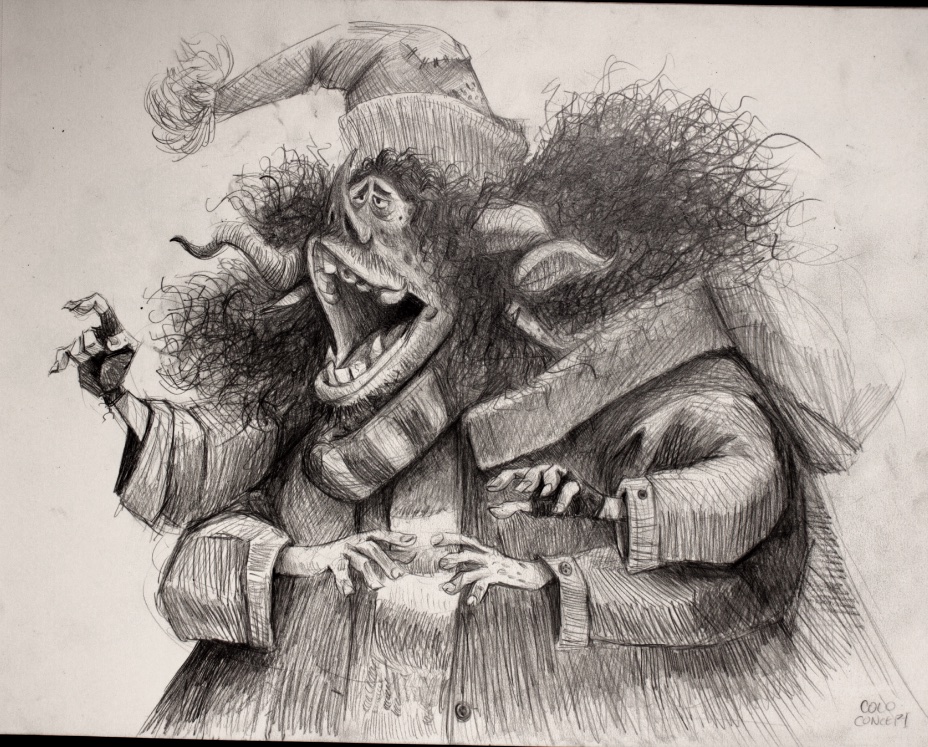
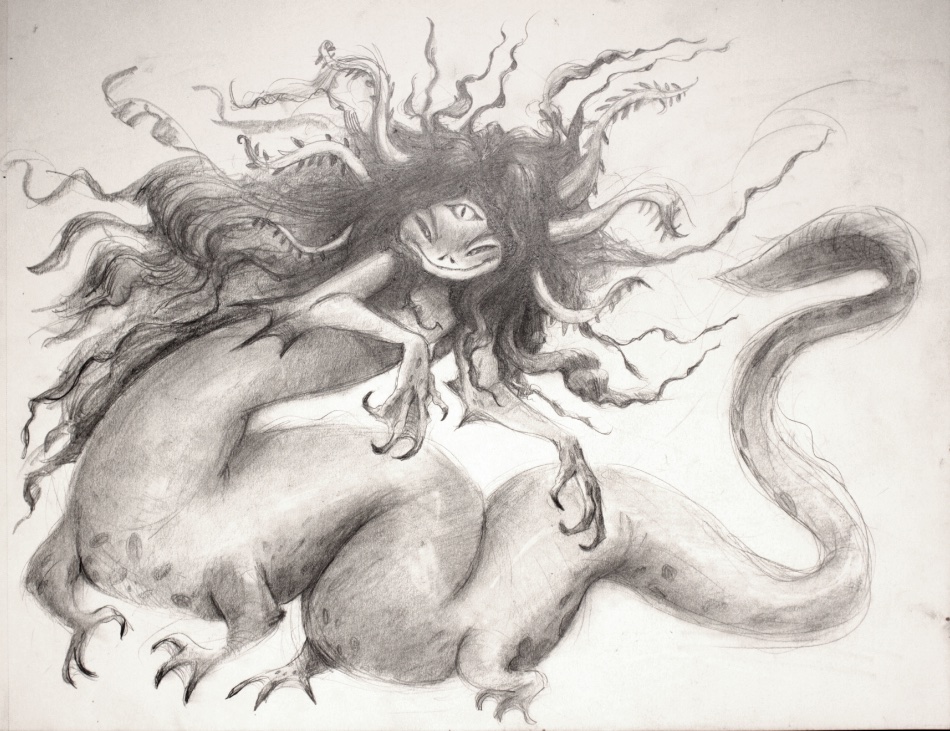
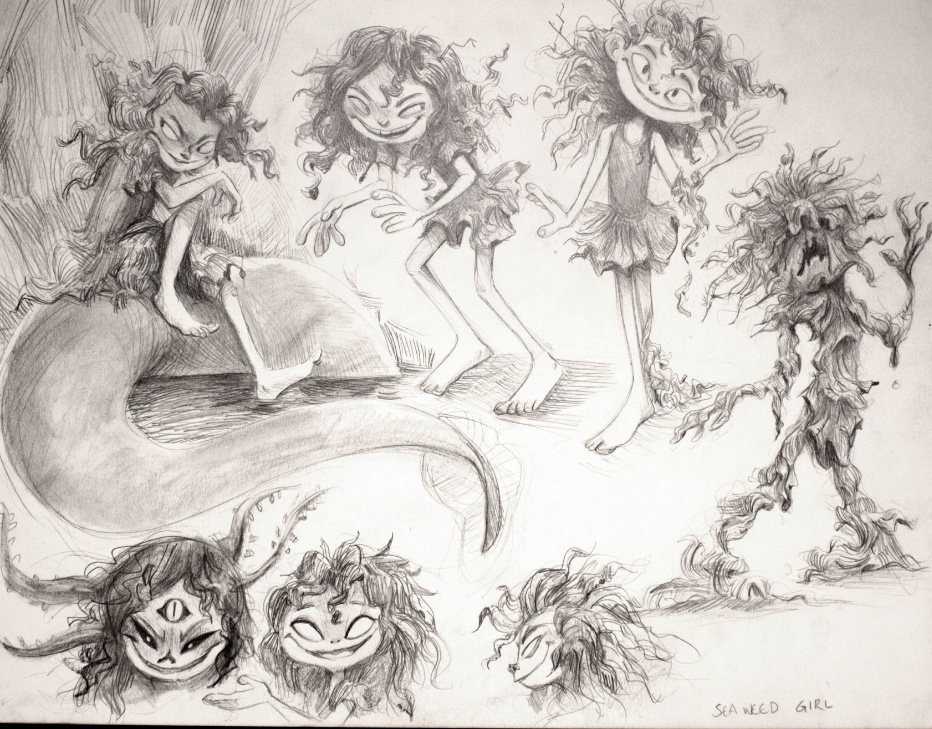
Roy Ambriz: When I start sculpting the characters, I like to see as many sketches as possible. There’s usually not a definite 2d design. Because we sculpt the character in clay, we have the chance to combine the characteristics that worked in the sketch phase, but we can improve by creating or subtracting volume, giving texture, or adding more detail.
This process unlocks a new way of creative thinking, because the character’s physicality and weight can interact with the space which it will inhabit. The shape usually comes from the 2d exploration stage, but there’s a lot freedom to take the characters to new levels of creepiness or charm using the tools that sculpture can provide. In this stage we can add from several historical and artistic influences, such as ancient sculptures, architecture, paintings, wardrobes from musical theater, etc.
For example, we tried to make the children’s puppets with smoother and simpler textures so that they would more closely resemble characters that you can find on Cartoon Network, and to make them more friendly. We explore more complex shapes and textures in the monsters.
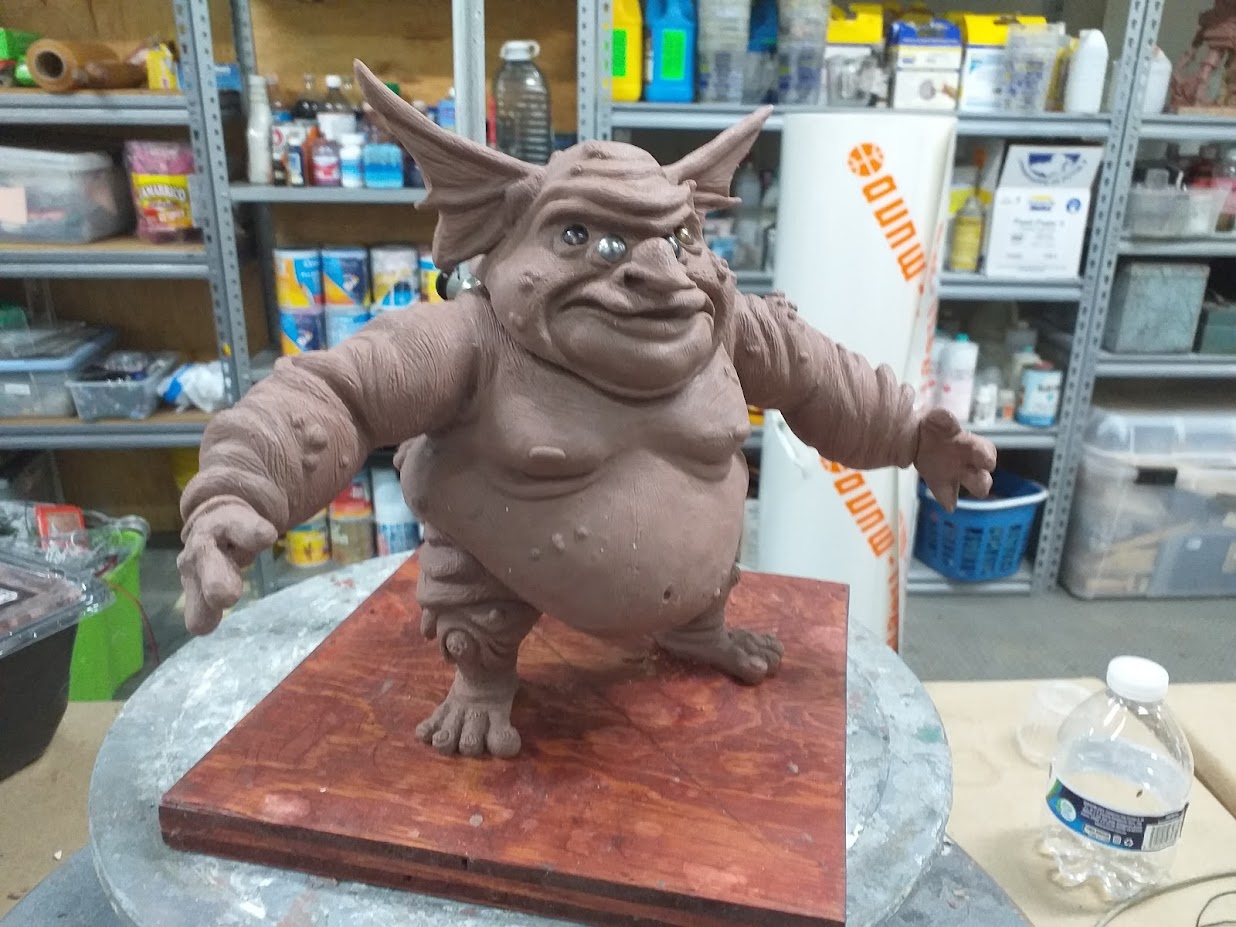

Roy Ambriz: Each puppet is made out of a great variety of materials. For example, sometimes in a single puppet the face (and its replacements) can be made out of resin, the body of foam latex, the arms and legs of silicone, synthetic hair for the wigs, and a variety of fabrics for the costume. Inside each puppet is a metal ball-and-socket armature that allows it to be animatable.
We have found that each material has a unique quality that allows us to use it for very specific purposes. We have learned that by trial and error, we can improve the way in which our puppets are built.
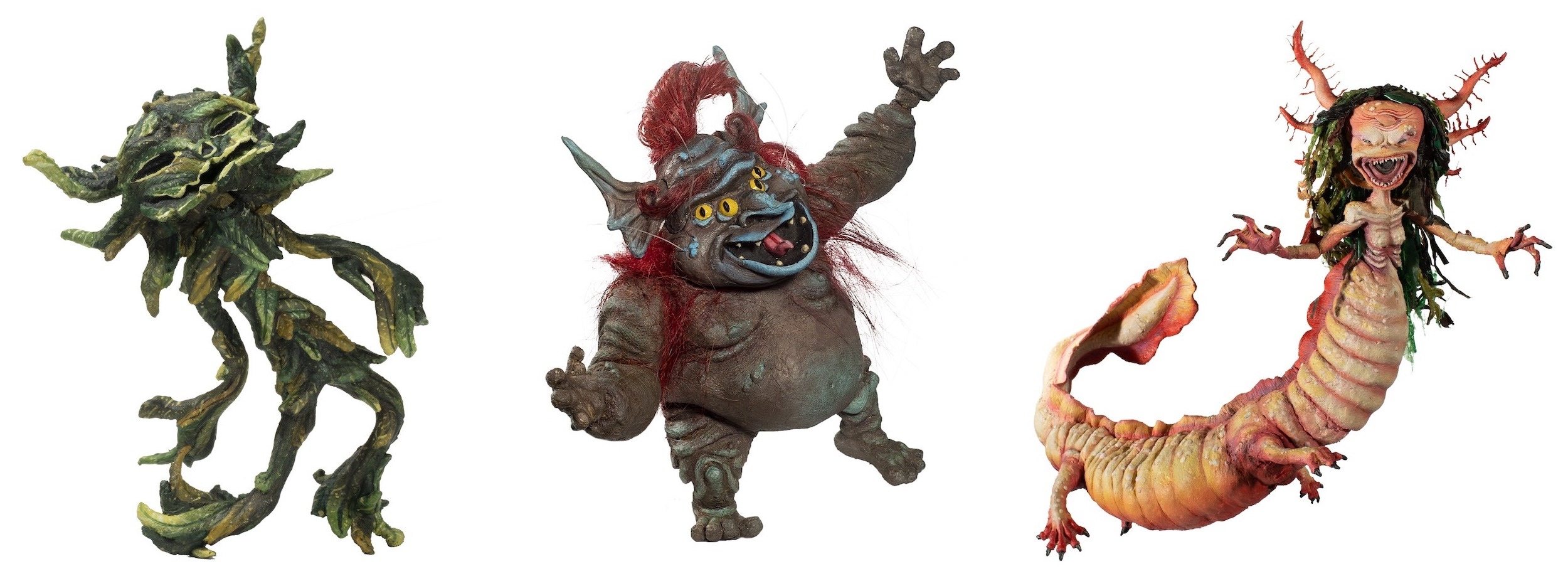
Roy Ambriz: We have a wide range of characters and each one has very specific complications. [They range] from very simple animals that are locked in the witches’ cages to giant characters like El Coco and the Mermaid, who also have about 40 different mouth replacements so that they can speak and express themselves. The mermaid in particular was very difficult to sculpt, because she has no clothes or anything where we can hide joints, and we had to apply texture and detail to every part of her body.
Ramírez brothers: The kids were definitely easier to design, because they were human, and for most of them we had real-life references and inspiration from members of the crew to design them. El Coco was the most difficult alongside Procustes. The former because we wanted to make him as unique and iconic as possible, and he has a lot of details both in the costume and in the mix of animal parts.
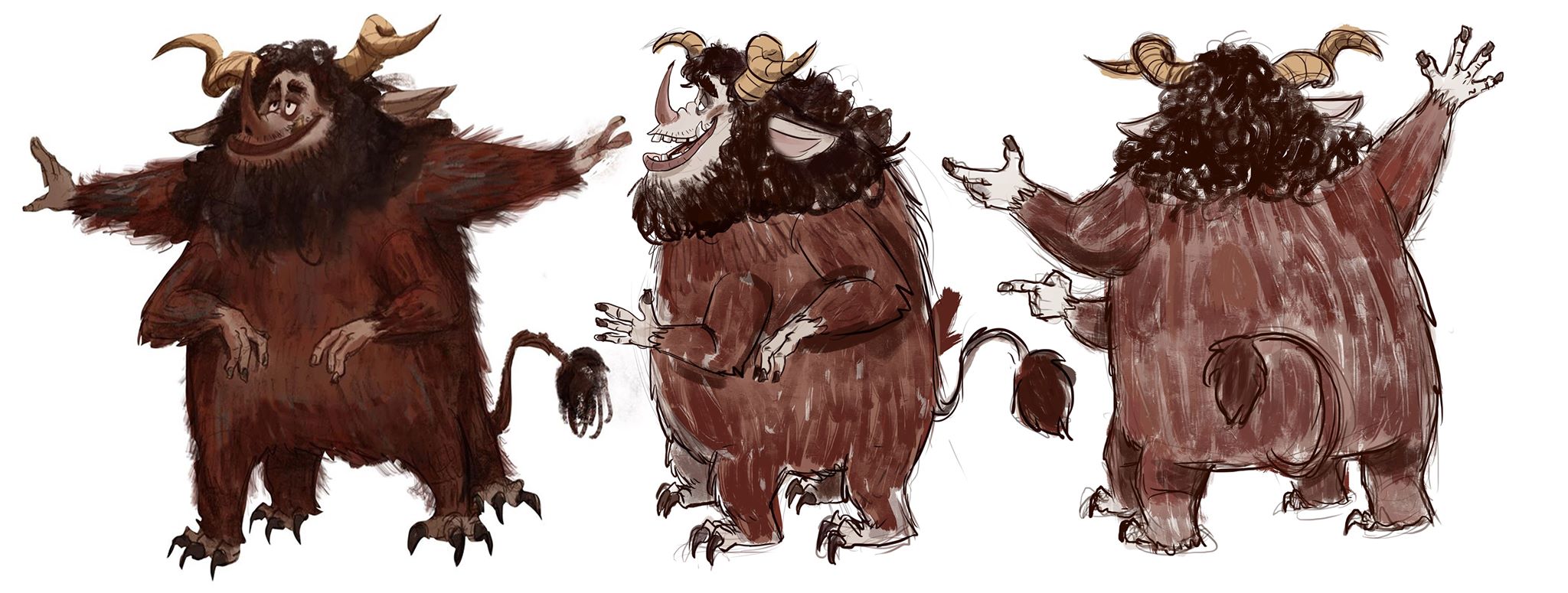
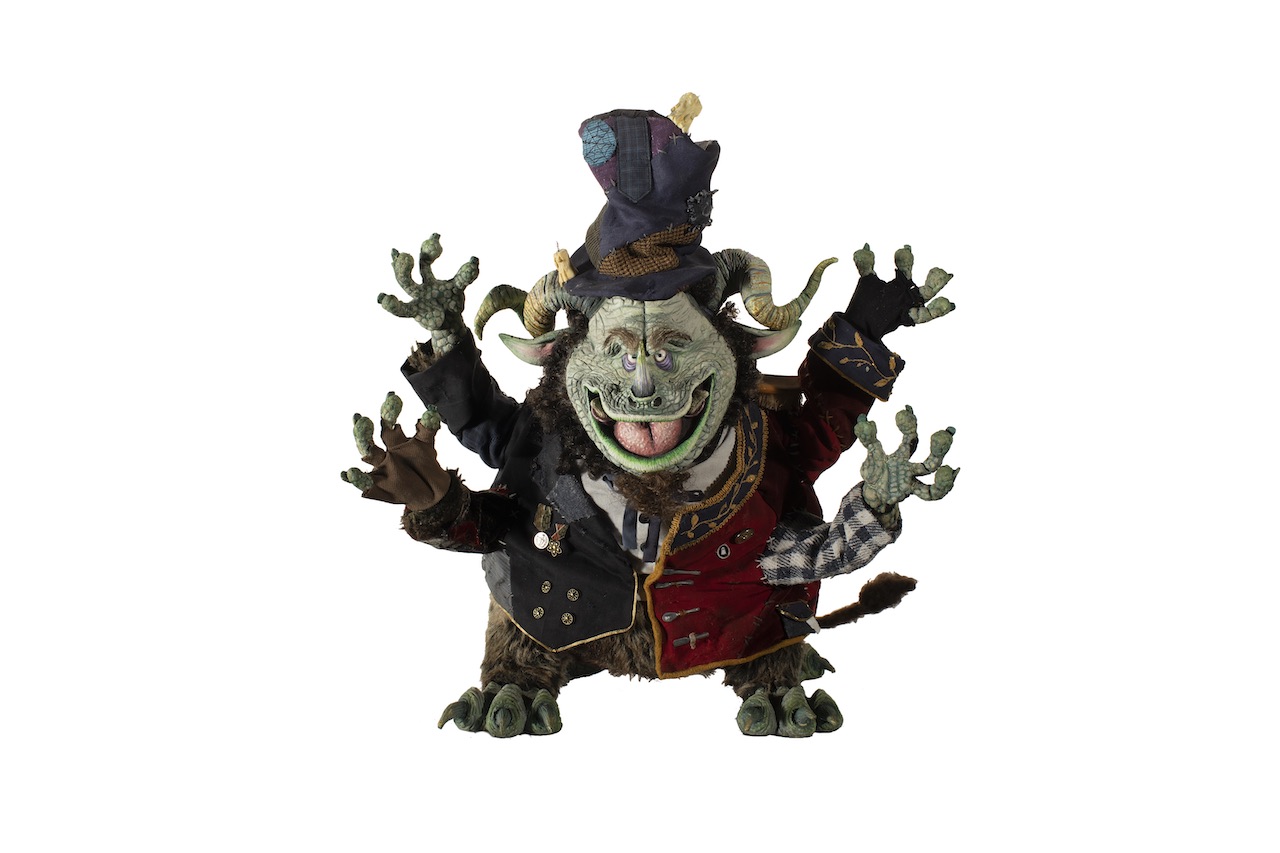
Ramírez brothers: Procustes was difficult because he is supposed to contain most of the things we despise, to set up his character as archaic and old-fashioned, with ideas that no longer work. But it’s hard to find that balance between making him ugly and despicable while still trying to keep the design appealing.
